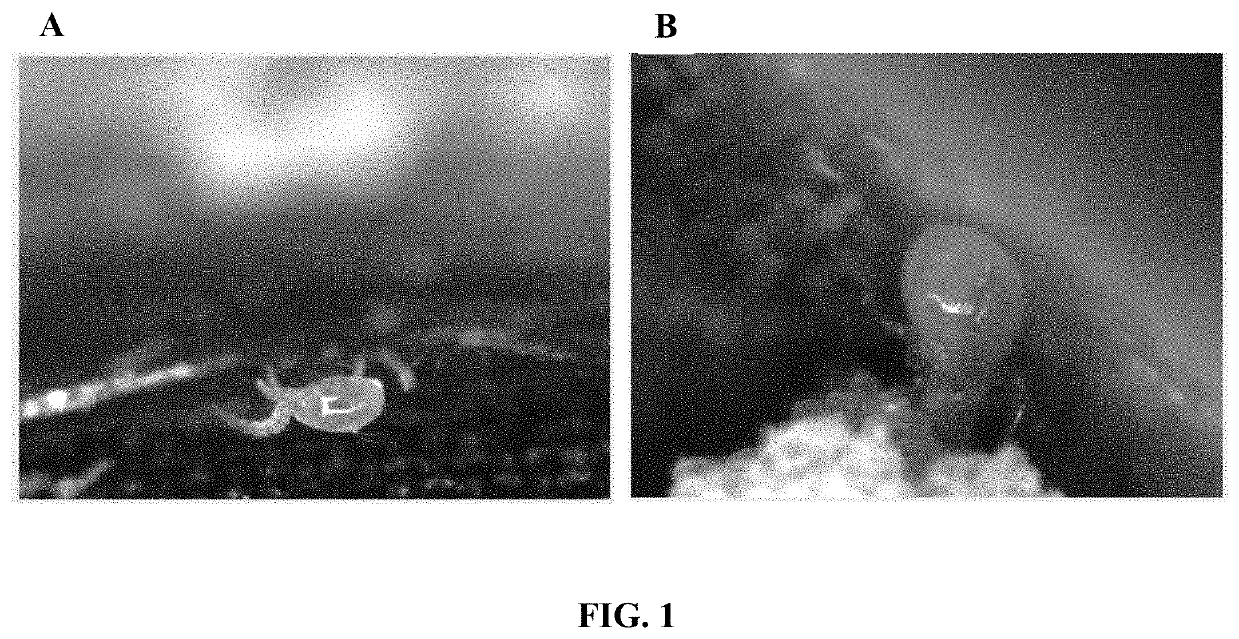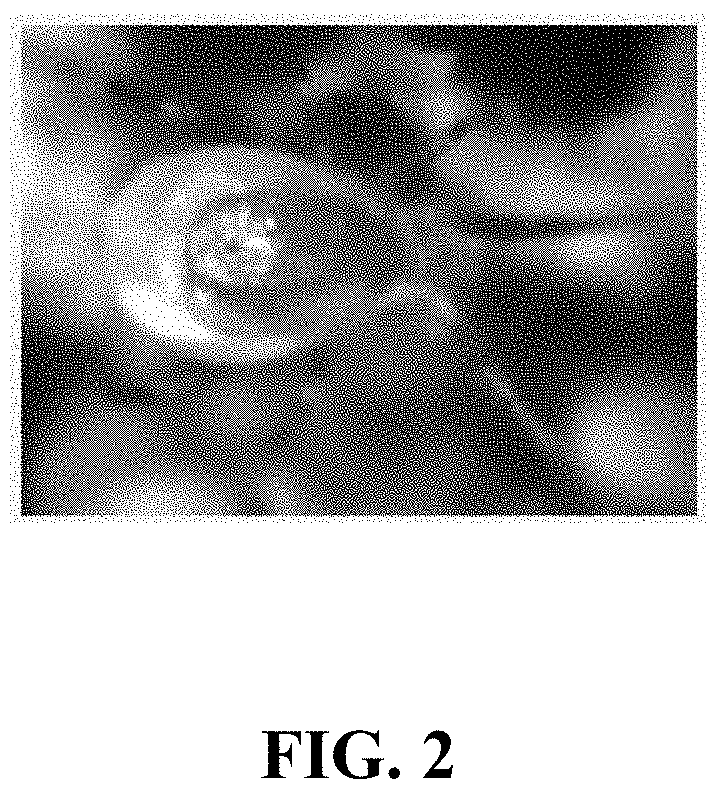Novel methods for rearing and controlled release of predatory mites
a technology of mites and control methods, applied in the field of biological control agents for crop protection, can solve the problems of high cost, disadvantages of p. persimilis /i>for spider mite prey, and difficulty in identifying prey mites
- Summary
- Abstract
- Description
- Claims
- Application Information
AI Technical Summary
Benefits of technology
Problems solved by technology
Method used
Image
Examples
example 1
[0544]Protocol for Rearing P. persimilis on non-tetranychid arthropod prey
[0545]In this example, rearing is done by feeding P. persimilis with a mixture comprising dead frozen developmental stages of C. lactis and sawdust or another carrier material (e.g. bran). The prey mites were immobilized by an immobilization treatment, e.g. by freezing them or by a gamma irradiation treatment, prior to using them as food.
[0546]Mites were fed with C. lactis immobilized by freezing, at the range of 10-1000 immobilized C. lactis prey individuals per one P. persimilis per day.
[0547]Exemplified growth conditions:
[0548]Temperature: in the range of 18° C.-30° C., particularly about 22° C.
[0549]Humidity: above 60%, particularly about 85%.
[0550]By using the aforementioned feeding regime, P. persimilis population was increased by an average of about 15%, per day.
[0551]FIG. 3 graphically describes the daily multiplication rate of P. persimilis, feeding on a mixture of dead C. lactis eggs and mobile stage...
example 2
[0555]Rearing P. persimilis on different Astigmatid mite species
[0556]In this experiment, different mite species were tested as food for P. persimilis using the following protocol:
[0557]30 P. persimilis mites were isolated in modified Munger cells, and served with astigmatic mites, immobilized by freezing, of the species that are listed below. Food was replaced daily, and the mites were checked for feeding signs. The signs used as indicators were a full roundish body (contrary to a flat body of non-feeding mites), and whitish coloration in contrast to the usual orange color when feeding on spider mites.
[0558]Reference is now made to FIG. 4 graphically presenting the percentage of P. persimilis showing feeding signs, as appeared by their body's shape and color, after given food for 3 consecutive days from each of the following prey species:
[0559]GD=Glyciphagus domesticus (Glycyphagidae family)
[0560]LD=Lepidogyphus destructor (Glycyphagidae family)
[0561]DF=Dermatophagoides farinae (Py...
example 3
[0565]Reproduction of P. persimilis Predatory Mites on Dermatophagoides farinae (D. farinae) Prey
[0566]In this experiment, the prey used was D. farinae life stages immobilized by freezing. Mites were reared by the method as described in Examples 1 and 6. Rearing was maintained for 6 weeks, and the daily reproduction rate measured was about 1.05 on average. This demonstrates that P. persimilis can reproduce on D. farinae prey for more than two generations.
PUM
 Login to View More
Login to View More Abstract
Description
Claims
Application Information
 Login to View More
Login to View More - R&D
- Intellectual Property
- Life Sciences
- Materials
- Tech Scout
- Unparalleled Data Quality
- Higher Quality Content
- 60% Fewer Hallucinations
Browse by: Latest US Patents, China's latest patents, Technical Efficacy Thesaurus, Application Domain, Technology Topic, Popular Technical Reports.
© 2025 PatSnap. All rights reserved.Legal|Privacy policy|Modern Slavery Act Transparency Statement|Sitemap|About US| Contact US: help@patsnap.com



